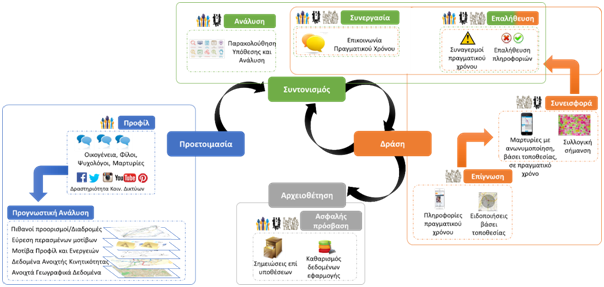ChildRescue: Collective Awareness Platform for Missing Children Investigation and Rescue

Each year, over 250,000 cases of missing children are reported in Europe; almost one child every two minutes. At the same time, about half of unaccompanied migrant minors disappear on some part of their journey to Europe. The problem of missing children and the dangers that unaccompanied migrant minors are facing is a complex and multifaceted phenomenon. Legal, psychological and sociological factors influence the evolution of such cases, and when it comes to situations where every minute that passes can determine a child's life, technology can be a critical catalyst.
With that in mind, ChildRescue is an EU-funded research project under the Horizon 2020 program, which aims to reduce the time elapsed since the disappearance of a child and the time it is identified, using information prediction and disappearance prevention tools. The Decision Support Systems Laboratory of the School of Electrical and Computer Engineering of the National Technical University of Athens is leading the effort, assisted by researchers from the Frankfurt University of Applied Sciences. The technical implementation and support of the project is provided by SingularLogic, Ubitech, MADE and Suite5, while the pilot implementation is provided by Missing Children Europe, Smile of the Child, Hellenic Red Cross and Child Focus.
The project aims to primarily create tools that help bring children in dangerous or vulnerable situations closer to the people who can protect them and give them shelter, either their families, or their caretakers and their legal guardians. In this sense, the methodology of the project does not distinguish between cases of missing children and unaccompanied migrant minors and considers them all as children who (potentially) are in immediate danger. In the context of this reasoning, the four stages of missing children investigation (preparation and profiling, coordination and collaboration, action, and archiving) can be summarized in the search for answers to two critical questions:
- What do we know? (Preparation and profiling, and archiving)
- What do we do? (Coordination and collaboration, and action)
ChildRescue is an Information System (IS) at its core, whose purpose, together with the software platform it will be accompanied with, is to collect and process information, with the ultimate goal to find people. The question “What do we know?” refers to collecting and creating information, by supplying it to the IS and allowing it to make predictions. The question “What do we do?” refers to actions that are to be performed by physical actors (persons) to collect more information, using what is already known, towards ChildRescue’s most important piece of information to be obtained; the current location of a child that needs to be found.

To achieve the above objective, the project methodology has described the enrichment of the procedures followed by the Smile of the Child and Child Focus. These organizations are part of the Missing Children Europe network and are responsible for supporting authorities in the disappearance of children through their contribution to the pan-European telephone number 166 000 for missing children and the support and / or publication of Amber Alerts. In addition, they can perform active searches with experienced and certified search and rescue teams equipped with up-to-date electronic means and specially trained dogs. At the same time, support is provided to the procedures for managing the reception and hosting centres for unaccompanied migrant minors of the Hellenic Red Cross as well as the diagnosis and support of children belonging at high risk groups due to the characteristics of their cases.
As knowledge is the most valuable asset in a search, ChildRescue develops algorithms and interfaces that can collect and analyze information related to the profile of the missing child or unaccompanied migrant minor (marital status, final destination, mental or physical health problems, use of drugs, the presence of friends / relatives / acquaintances in geographical locations, frequented areas, etc.), and lead to the exclusion, specification or enlargement of areas to which investigations are conducted, and the prediction of possible routes that the child may follow or be transferred to, in real time, as searches are conducted.
At the same time, given that the release of Amber Alerts is in the form of a national announcement and that in the age of constant bombardment of people with information, it is very difficult to trigger their attention, a very lightweight mobile application is going to focus on alerts only in areas where there is a higher likelihood of obtaining or producing information on a particular case. Combined with the definition of areas of special interest mentioned above, these alerts will be easily sent only to the people in them, while their privacy and anonymity will be ensured by using geo-fencing techniques.
On parallel to that, a wide range of volunteer networks assist in the investigations in many ways, including leaflet distribution, posting, as well as search and rescue, interviewing, etc., activities that primarily support and involve the exchange of information among the volunteers, the volunteers and the coordinating bodies or the above with the authorities. This exchange is greatly facilitated by the development of a monitoring and communication tool within and with these groups, which facilitates their coordination and the better geographical coverage of the investigations in a shorter time. ChildRescue is going to provide a supportive coordinating tool for the business centres of these organizations, utilizing the live GPS data of the volunteers and allowing the sending of orders and data collected in both directions.
The ChildRescue project was launched in January 2018 and is going to be completed in December 2020. Its pilot operation begun in summer 2019 and enriches NTUA's research work with academic publications, conference attendances, and thesis and dissertation work. More information is available on the project's website.
